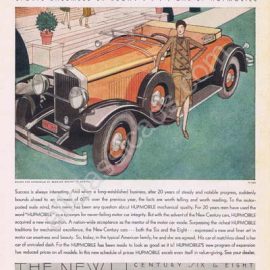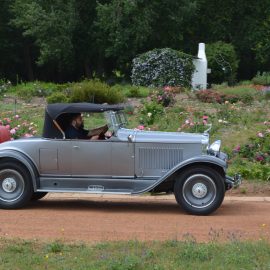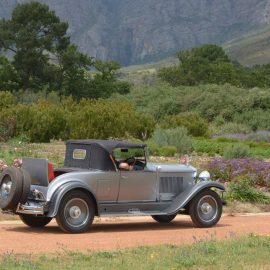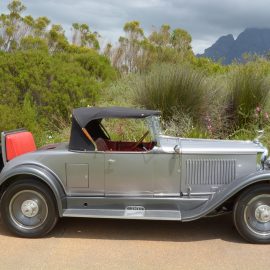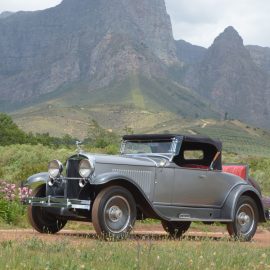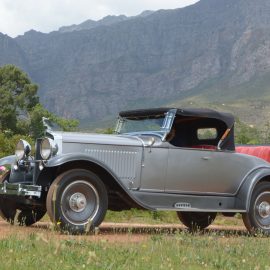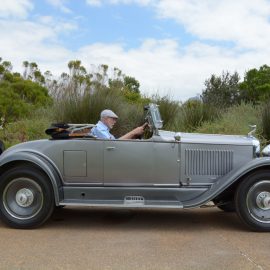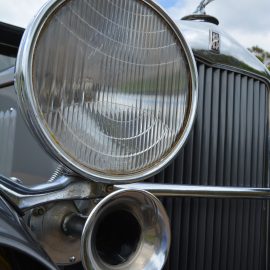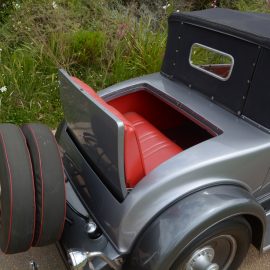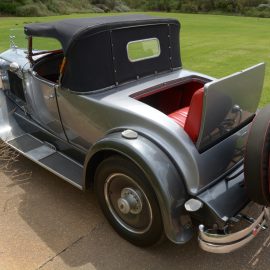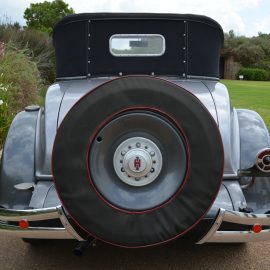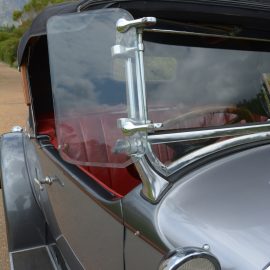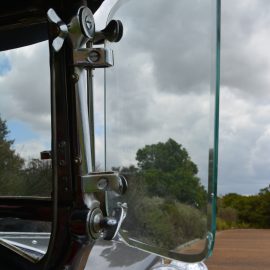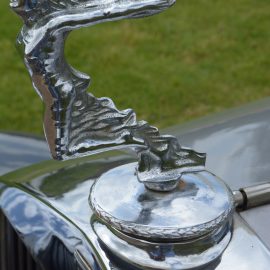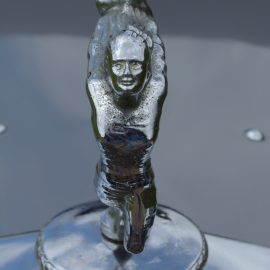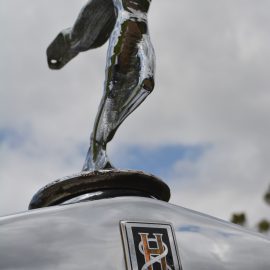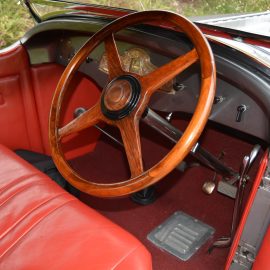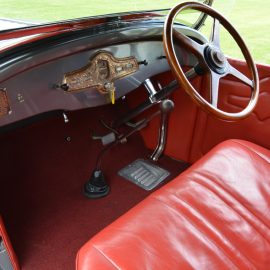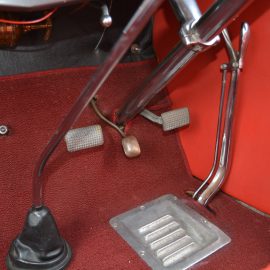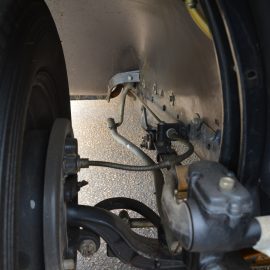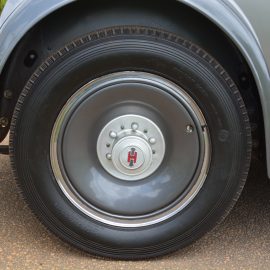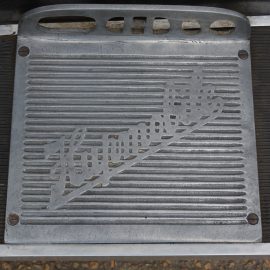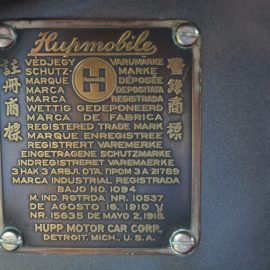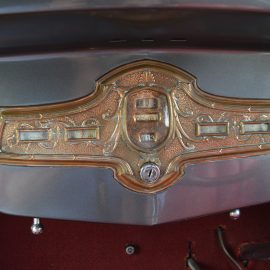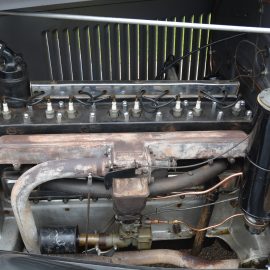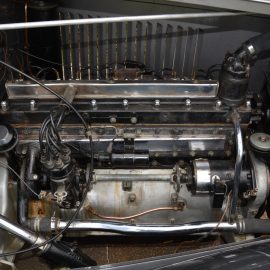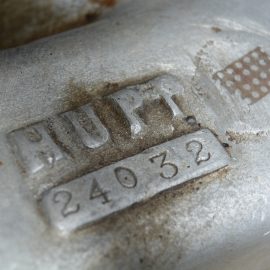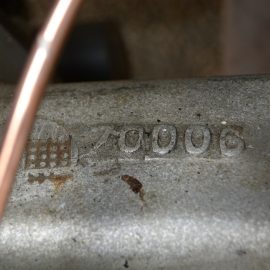
30 Oct Collection In Action: Hupmobile Series M roadster
Hupmobile is an automotive brand that is not familiar to most people. The company lasted less than four decades, but the cars were a bit special. Mike Monk describes a Roadster that has recently been put back on the road…
Hupmobiles were popular amongst South Africans during the country’s pioneering years of motorised transport. Tough, reliable and not particularly expensive, by 1920 no less than 130 imports a month were ordered by the American company’s distribution centre in Johannesburg. (Hupmobiles were never built or assembled locally.)
Former Ford and Oldsmobile employee Robert Craig Hupp broke away and founded his own company, the Hupp Motor Car Company, in 1908. His first car was a small, open-topped runabout that he launched at the following year’s Detroit Motor Show. By 1911, annual sales were in excess of 6 000 units. Early cars were powered by a 2,8-litre four-cylinder side-valve engine, which was phased out in 1925 when a 4,0-litre straight-eight side-valve was introduced. While inherently smooth, straight-eights have long crankshafts that push heavy centrifugal forces along the engine’s internals. With this potential phenomenon in mind, Hupmobile built its motor with a fully counterbalanced crankshaft sitting in five main bearings, along with Duralumin con-rods and relatively lightweight cast-iron pistons, to offset some of the crankshaft’s weight. Hupmobile’s eight-cylinder gamble proved the right move for the small independent automaker, as by the end of its first year it could claim to be the world’s largest producer of straight-eight-powered automobiles.
An in-line six followed in 1926, the same year that four-wheel Lockheed 14-inch hydraulic drum brakes were introduced on the eight-cylinder models – the six-cylinder cars retained mechanical brakes. In 1928, another step forward took place when Hupmobile adopted four-wheel Steeldraulic brakes, which comprised a one-piece internal-expanding brake band in lieu of separate brake shoes. This set-up improved braking efficiency.
But the really big news in 1928 concerned the cars’ looks. The Series E models were replaced with the Series M which were styled by Amos Northup, who was considered one of America’s leading automotive stylists. The 1928 Hupmobile was considered by some to be the best-looking moderately-priced car of the year, and was a big seller. They were ‘go anywhere’ vehicles and well cared for by their owners. Sales amounted to 65 862 units, and Hupp bought Chandler-Cleveland Motors Corporation in order to take over its facilities to increase production.
Everything looked rosy for the Detroit-based manufacturer, but 1929 saw the stock market crash that led to the Great Depression. Having geared up to meet an anticipated sales figure of 100 000 units for the year, sales slumped dramatically and the Hupp Motor Car Company lapsed into a steady demise. Surprisingly, I found information on Hupmobiles from this time – especially Series M models – to be scarce, brief and even a little confusing in places, but indications are that FMM’s car is a 1929 Series M.
Once part of the Bertie Bester Collection, it is an attractive two-tone grey Roadster complete with dickey seat, so is capable of carrying four passengers. The eight-cylinder engine had grown to 4 403 cc and produced 52 kW at 3 000 r/min. Hupmobile used a conventional three-speed manual transmission of their own design, with a floor-mounted shift lever. The starter button is also floor-mounted, and the accelerator pedal sits between the clutch and brake, while the handbrake sits to the right of the footwell. Cam-and-lever steering operated by a simple wood-rimmed four-spoke steering wheel is naturally heavy, and the turning circle is large. Wheels are unusual and distinctive 19-inch stamped steel discs.
After recently receiving some innovative minor mechanical refurbishment by the workshop team – spare parts are very hard to find – it was great to get the Hupmobile back on the road. Once running, the engine sounds and feels powerful. Torque figures are not available, but the big motor feels ‘unburstable’ while anything and everything seems possible in second gear, such is its flexibility. Typical of the era, the driving position is tight – there is more legroom in the dickey – but the controls are easy enough to operate. Riding on semi-elliptic springs front and rear, the ride is relatively comfortable. With the hood up, the view through the narrow windscreen is clear, with the dramatic radiator mascot leading the way. Fairly large glass ‘quarter-panes’ at each end of the windscreen help deflect wind past the otherwise unprotected sides of the Roadster. The hood is easy to fold providing two people carry out the procedure in tandem.
The last Hupmobiles were built in 1940 and there are a surprising number of survivors around the world, including in SA. It was a pleasure to experience this example of a make that is not universally well known, and it will now be seen more regularly on FMM displays.
In closing, I found some period advertisements of Hupmobiles and below is the wording of the picture featured here.
CREATORS OF THE MODE
SPORTS ENSEMBLE BY REGNY . . . . CAR BY HUPMOBILE
Success is always interesting. And when a long-established business, after 20 years of steady and notable progress, suddenly bounds ahead to an increase of 60% over the previous year, the facts are worth telling and worth reading.
To the motor-packed male mind, there never has been any question about HUPMOBILE mechanical quality. For 20 years men have used the word “HUPMOBILE” as a synonym for never-failing motor car integrity. But with the advent of the New Century cars, HUPMOBILE acquired a new recognition.
A nation-wide acceptance as the mentor of the motor car mode. Surpassing the richest HUPMOBILE traditions for mechanical excellence, the New Century cars … 60th the Six and the Eight … expressed a new and finer art in motor car smartness and beauty. So, today, in the typical American family, he and she are agreed. His car of matchless deed is her car of unrivalled dash.
For the HUPMOBILE has been made to look as good as it is HUPMOBILE’S new program of expansion has reduced prices on all models. In this new schedule of prices HUPMOBILE excels even itself in value-giving, See your dealer.




